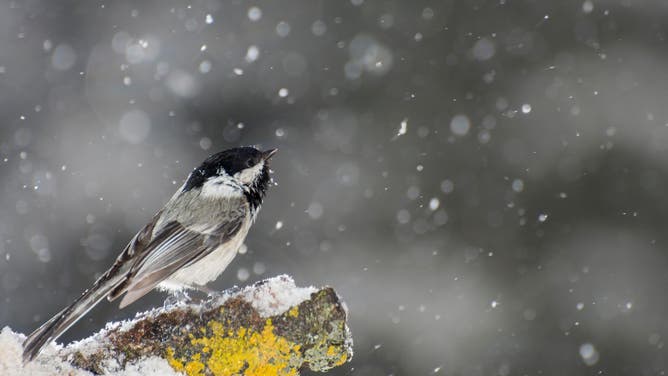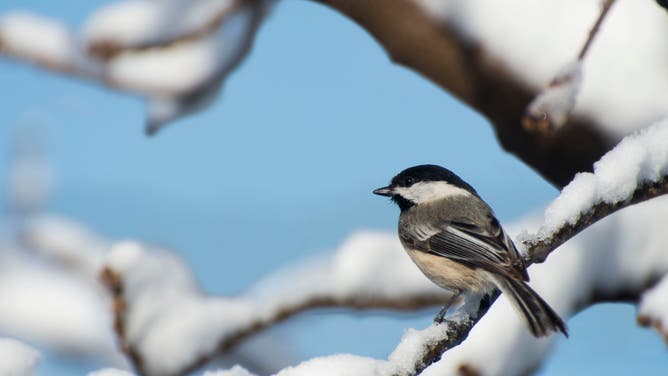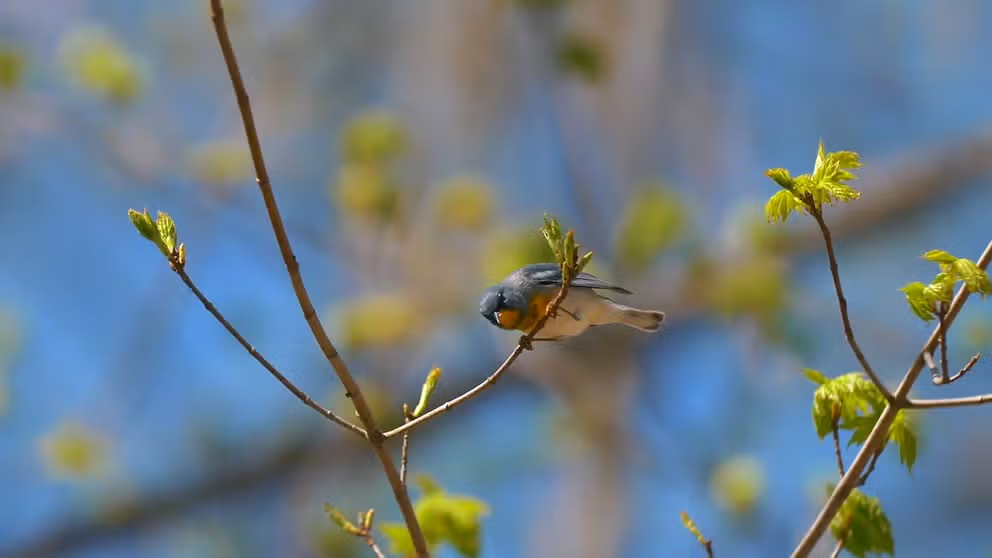Popular US bird grows brain tissue to survive brutal winter
The Black-capped Chickadee's hippocampus, the part of the brain responsible for memories, grows in the winter. This helps the bird remember where it buries its food.
How to make your community more bird-friendly
Saturday is World Migratory Bird Day, and people across the globe will be celebrating with migratory bird walks and events at local parks and nature reserves. Light pollution and its impact on migratory birds is this year's theme which strives to raise attention and awareness. John Rowden, senior director of Bird-Friendly Communities for the National Audubon Society, joins FOX Weather.
Winter brings fascinating changes to animals. While mammals add weight to stay warm as they hibernate, birds will grow more feathers for their long migratory flight south.
And then there's the Black-capped Chickadee, which adds brain tissue, instead of weight or feathers.
The palm-sized bird native to Michigan has a knack for having a good memory – but only in the winter. In colder months, this clever bird survives by feeding on seeds and other food items that it has stored in the ground by memorizing where it buries the sustenance.
When it gets hungry, it returns to the burial sites.

Black-capped chickadee sitting on branch in a spring snow storm.
(Michael Siluk / Education Images / Universal Images Group / Getty Images)
It's only capable of doing this in the winter because the memory portion of its brain – the hippocampus – is hardwired to increase in size. Some chickadees have been shown to grow the piece of the organ by nearly a third, enabling them to recall hundreds of spots they've buried food.
"This is the wonder of the science we do right now," Dr. John Bates, the associate curator of birds at the Chicago Field Museum, told FOX 2 Detroit photojournalist Coulter Stuart about the special species of bird. "There are techniques allowing them (researchers) to get very detailed real-time data on change in the hippocampus over time that's demonstrating unequivocally that it's actually getting bigger."
This species of chickadee lives in a large swath of the northern U.S. and southern Canada, extending as far south as North Carolina and Kansas and as far north as Alaska. That includes all of Michigan, where it lives in woodlands and bushy areas near the state's urban centers.
Bird Songs of Spring
Day length, sunlight and instinct give the birds their seasonal cue.
Identifiable by its black-colored head, its small body comes with a large round head. Birders will know the bird by its call, which sounds familiar to its name: "chickadee-dee-dee."
Chickadees call much of North America home. Instead of flying south for the winter, the busy songbirds instead tough it out during the cold months with the help of fall preparation. Over the past few years, scientists have recorded the species locating hundreds of seeds stored in the ground.
As the demand for more memory grows in the winter, the bird species will grow brain cells to make room. Then, it discards those cells when it no longer needs to remember. According to the Audubon Society, the phenomenon could have big implications for studying degenerative brain diseases like Parkinson's and Alzheimer's.

Black-capped chickadee sitting on a snow-covered branch.
(Michael Siluk / Education Images / Universal Images Group / Getty Images)
The supercharged memory is the species' life-or-death adaptation since it sticks around in the winter. But even a storage bank this impressive has its limitations. Scientists have determined the long-term memory only goes back 28 days.
PROJECT TRACKS BIRDS MIGRATION USING NWS WEATHER RADAR
That means some seeds likely get forgotten – which has big implications for the forests it calls home.
"They're almost certainly not going to remember where they cached everything," Bates said. "It's got to be a great dispersal mechanism for plants."
Many of the plants and trees that grow in Michigan's forests started growing after their seeds were stored in the ground and forgotten. In other words, the makeup of Michigan's forests is partly due to the expanding and contracting brain of a chickadee.

